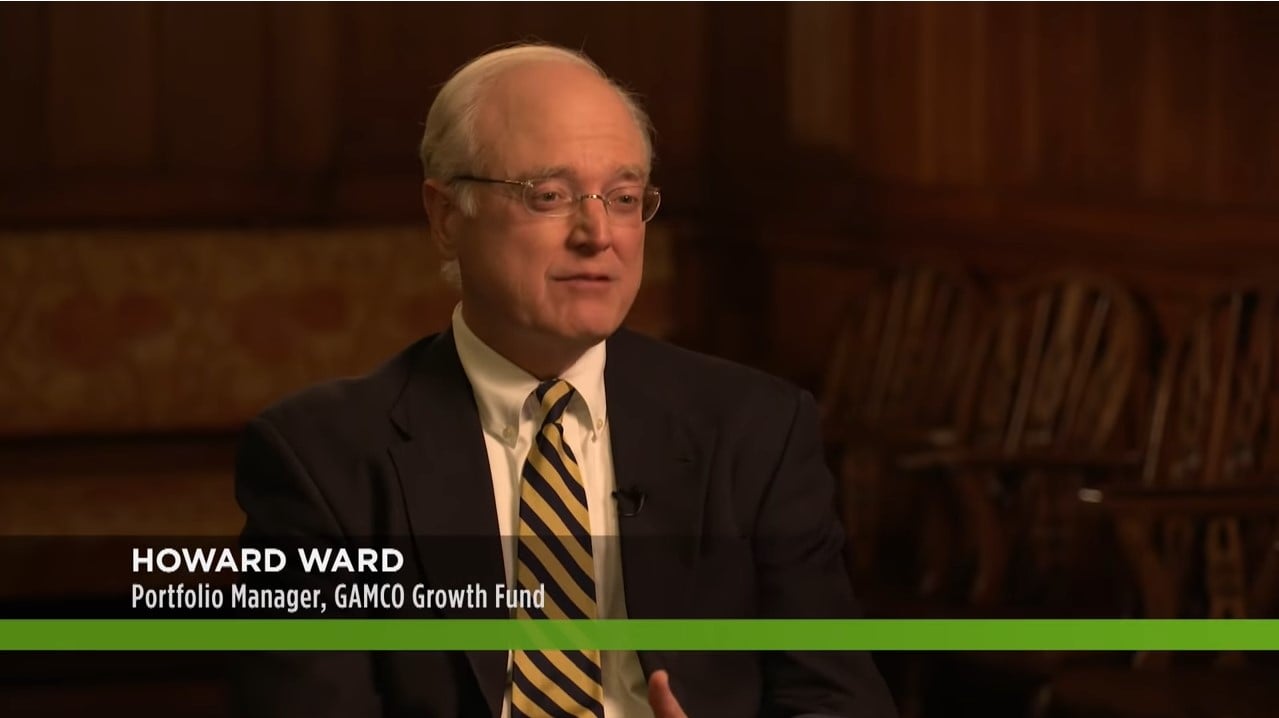The FAANGS will continue to flourish, even in a late cycle market says market-beating portfolio manager Howard Ward who owns them in his GAMCO Growth Fund.
Late Growth Cycle Opportunities: FAANG Stock Fever Increasing Globally
Q1 hedge fund letters, conference, scoops etc
Transcript
I've since Ward is new to wealth track. I wanted to start with a basic question. How does he define growth.
What we would define growth as companies that have above average top and bottom line growth. So what's above average. Well what we're looking for right now is really ideally a top line growth of around 10 to 15 percent. Bottom line growth of around 15 percent. And when I look at our portfolio timing revenues bottom line being profits so your profits right. And when I look at our portfolio and our GAMCO Growth Fund today which has about 38 Holdings the average rate of both top and bottom line growth for the last five years was 17 percent which is what I find that interesting because normally there's a divergence where for most companies the topline doesn't grow as fast as the bottom line. And yet in this case they've matched up perfectly which is what you want.
So what is it about the kinds of companies that you have in the portfolio that enable you to have bottom and top line growth basically growing at the same rate.
Well we're looking for parts of the economy that generally have a tailwind where you have a technology or or healthcare or a discretionary business where it's gaining share it's growing faster than GDP it's its share of the GDP pie is growing as an industry and you want the best companies within that industry and they do tend to focus they tend to fall into a few areas predominantly this right ology it's health care it's consumer discretionary and then it's a few other things. You're not going to find it in most energy stocks material stocks or industrial stocks. Those are rare. A lot of those earnings are also somewhat manufactured with a lot of acquisitions. So the ideal growth company for us has a lot of organic growth. It doesn't mean you can't supplement that with bolt on acquisitions here or there that's fine. But the more organic growth you have the higher the multiple is going to be on your earnings or your cash flow.
Is it hard to find companies like that.
It's a little bit hard you know when you consider that we're starting with an investable universe of around a thousand names and we're boiling that down to you know 40 to 50 let's say so. So yeah I mean there aren't there aren't that many names that have the consistency and the tailwind that we're looking for. We weren't really dominant companies and then the other thing is when you're building the portfolio when you're involved in portfolio construction you want to make sure that you're not overly lopsided in one area or another. I've been there I've done that and that ends badly. So you need to try to find a certain balance in the portfolio and you're always trying to find it you know and you maybe never get exactly where you want to be because things change but you're always trying to find that elusive balance in the portfolio.
Tell us about the elusive balance because there are many portfolio managers who say look I'm going to let my profits run and my good performers run why not let Microsoft for instance which is your largest holding currently and yet I'm chrome Growth Fund. Why not let that just run why not that let that get you.
Sighs Well for the most part we try to do that. We did have a problem in the last year where we had four or five individual investments things like Apple and Microsoft and Google which is now called Alphabet of course. These kinds of names Facebook at the time also to the fact where they were all 6 to 7 percent of the portfolio. And that becomes a very high risk. Not only that but the S.E.C. has this funny little rule for mutual funds that want to call themselves diversified which is you can't have more than 25 percent of the portfolio in individual stock positions of 5 percent or more. So you're actually forced to cut back at some point. The other thing that I will point out is it's okay to take some of that cream off of the top when you've had stocks rise. The way we've seen a number of go back to the fang example when you see the kinds of returns that the FANG stocks generated in recent years and I'm going to include Apple in that as well because that was a huge winner for us. It's okay to take some of that profit off the top end and put it away for a rainy day right cycle those profits because you know you can have situations like in 1999 2000 if you went into the first quarter of 2000. END OF MARCH 2000 with a huge overweight in technology you probably got your head handed to you never really know when those moments can come when you can be severely damaged in terms of your relative performance because you have much more of your weighting in the particular sector and your competition doesn't right.
So you've been there you've seen that you've seen markets cycles and you're just saying that it's it's not some volatility and risk matter to you. Well.






